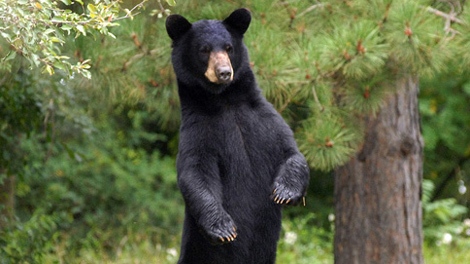Conservation officers in British Columbia killed 303 black bears in 2024 due to human-wildlife conflict, according to officials.
That’s almost half as many bears as the year previous, when an all-time high of 603 were destroyed.
Fort St. John reported the highest number of black bears killed among Peace Region municipalities, with a total of two. Dawson Creek, Chetwynd, and Fort Nelson each recorded one black bear death.
The unincorporated community of Pink Mountain led the count within the Peace River Regional District with seven of the bears killed.
Notably, there were no black bear deaths in Hudson’s Hope, where, in March 2024, the municipality started issuing $230 fines to residents under the Wildlife Act for failing to pick up fallen fruit from their yards.
The highest number of bears were culled in the Okanagan region, 68, followed by Thompson-Cariboo at 60 and Kootenay at 49. The highest death count for a single city was in Williams Lake, at 13, followed by Kamloops at 11.
However, 2024 was also the least deadly year for B.C. bears since the province began publishing statistics online in 2011.
Calls to the B.C. Conservation Officer Service’s Report All Polluters and Poachers (RAPP) line about bear conflict reached record highs in 2023, but dropped by 10,000 last year to 17,345, according to the agency.
“While it is encouraging to see fewer black bear conflicts and black bears dispatched overall, the public continues to have a critical role to play to reduce human-wildlife conflicts. Human-wildlife conflict is complex and cannot be solved by the COS alone,” said Chief Conservation Officer Cam Schley in a media release Monday.
BCCOS cited abundant natural food sources for bears, such as berries, in 2024 as one reason why fewer of the animals entered communities and caused problems.
One factor behind the previous year being so lethal for bears was the record-breaking, destructive wildfires that ripped through the province—about 20 bears were euthanized because of severe burns in the Thompson-Shuswap region, and the flames pushed them into populated areas.
Just under two per cent of calls resulted in a bear being killed in 2024, conservation officers said.
A key way the public can help reduce human-wildlife conflict and therefore fewer bear deaths is to remove anything that could lure the animals to their properties—garbage being the top offender.
“Attractants continue to drive a significant number of bear conflicts across B.C.,” Schley said Monday. “Residents, businesses and communities all need to do their part to secure attractants such as garbage, pet food and birdseed to help keep people safe and wildlife wild.”
*With files from CTV News Vancouver’s Alyse Kotyk, Kaija Jussinoja.
